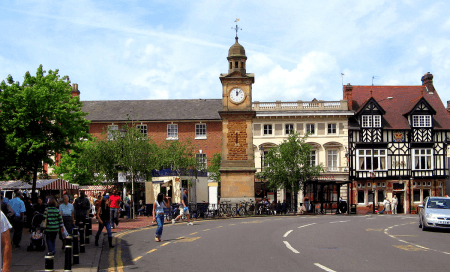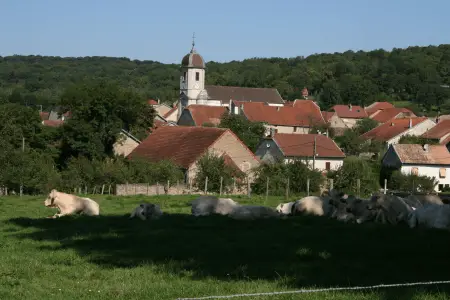Of all the types of human settlements, towns and villages are among the smallest. And yet, they differ greatly among themselves, at least in theory.
In reality, any community can develop in accordance with its own needs and possibilities. Therefore, you can have one very prosperous village with all the facilities, as well as a very poor town with none of the facilities. Let’s look closer into this.
Summary Table
| Town | Village |
| Is bigger and can be considered an urban type of settlement | Is small and is a rural settlement |
| Has houses and public institutions | Has houses and farms |
| Has its own elected town officials | Is represented by the officials of the nearest town |
| Has all the important public institutions | Only has some of the public institutions; for the rest of the public services, people must travel to town |
| Offers a variety of jobs | Offers some jobs, although most people make a living from agriculture |
| Has infrastructure | Can have dirt roads |
Definitions

A town is considered a small, urban type of human settlement. It has a fair number of inhabitants and all institutions necessary for communities to thrive, like schools, hospitals, a city hall, police and fire departments, stores, restaurants, and cultural and religious institutions. Most of the large cities of today started out as towns and then progressed to the statute of city as their populations grew and their offer of jobs and services became more diverse.
The line between a large town and a small city is very fine. They both have the infrastructure, paved roads, and constructions; however, a town will have houses where a city has tall buildings.
Benefits of Living in a City
- Economic growth: cities are economic centers where it’s much easier for individuals to find work and prosper.
- Cultural diversity: these locations usually have a diverse population, which makes for a great cultural scene and cultural experiences.
- Access to resources: is much easier in the city. Resources include hospitals, libraries, and educational institutions.
- Transportation access: cities also offer more well-developed transportation systems than villages. This makes it easier for residents to move around the city and access resources.
Drawbacks of Living in a City
- Overcrowding: cities can quickly become overcrowded, leading to problems such as air pollution, harder-to-access resources, and traffic issues.
- Higher cost of living: is usually found in cities, which can make it more challenging for some residents to afford their basic necessities.

A village is a smaller settlement unit, situated in a rural area, with living and farming units and very few commodities for the people living there. As an administrative unit, villages are governed by the elected officials of the nearest town. They have schools but only up to the secondary phase of learning, and have clinics or small local practices instead of hospitals.
Although there are jobs to be had in a village as well, most people earn their living from agriculture and there is usually very little economic activity. Whether or not a village has a church, a police department, a farmer’s market, or any other type of public institution depends on the local community.
Benefits of Living in a Village
- Stronger sense of community: is usually found in a village. The residents are usually closer to one another and share a common way of life. These communities offer a sense of belonging and support for their residents.
- Low crime rates: villages usually have lower crime rates than cities. So, they offer a safer environment for their residents.
- Closer to natural beauty: village are typically located closer to natural environments in rural areas. These areas give residents beautiful areas to enjoy natural beauty and outdoor recreation.
Drawbacks of Living in a Village
- Limited job opportunities: villages usually have smaller economies than cities, making it more challenging to find work.
- Limited access to services: because villages may lack access to services (such as healthcare, education, shopping, and more), residents may find it difficult to access their basic necessities.
- Isolation: villages also tend to be more isolated from cities, making it a challenge for residents to access cultural and social opportunities.
Town vs Village
So what is the difference between a town and a village?
The main difference between the two is in size. A village is one of the smallest administrative units, while a town is larger. In many cases, villages that started to thrive have become towns and have expanded to include other nearby villages.
The numbers that define each of these two types of settlements depend on each country’s administrative policies and history of development.
They are both rural areas, although a village can be more or less isolated, can have very few people, and can have no infrastructure. A town, on the other hand, has a large number of houses – usually one-family units – infrastructure, and public institutions.
Politically, a village does not govern itself but is under the administration of the nearest town.
People from the village vote in town elections and the elected mayor will be in charge of their community as well.
The more developed a town is, the more diverse its facilities and services will be. Therefore, although a village can only have as much as a primary and secondary school, a town will have several high schools and even a local college. It can host one of several cultural institutions ranging from a cinema, theater, museum, or art gallery to a community center or other such places. Stores and markets are opened on demand.
Therefore, small villages may not even have one store, whereas in a town you can find several such establishments. The same goes for pubs, bars, restaurants, and other food units.





